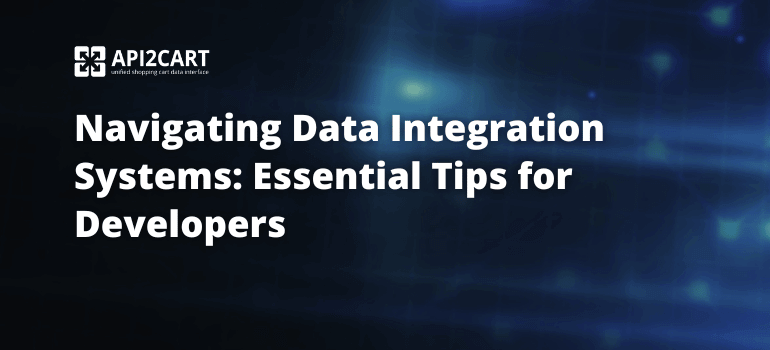
Various financial transactions, administrative procedures, business communication, and other possible activities are rapidly moving to electronic channels. And there are many good reasons for that, while the main benefits from it are process automation and enhancement.
Companies have been leveraging electronic data exchange technology for business since 1971. Today, there are many different means and ways that are used to carry out and facilitate electronic business communication, transactions, and data interchange. Electronic data transfer methods have infiltrated trading, logistics, manufacturing, and a number of other realms.
eCommerce
The most common term that comprises various types of paperless business interactions carried out via computer networks is e-commerce. It includes such communication methods and technologies as EDI, B2B integration, API integration, etc. Though they can be related, akin, and sometimes interchangeable, they are not the same.
By and large, eCommerce can be divided into two types:
- B2C (Business-to-Consumer) eCommerce is the form of electronic trading that implies that commercial organization sells or provides services directly to the end customer. It is the traditional and most common business model in eCommerce.
- B2B (Business-to-Business) eCommerce implies business relationships between two businesses, whether it is collaboration, data exchange, providing service, or selling. In other words, B2B companies sell products or services to other businesses, rather than to the end customers.
The eCommerce ecosystem is highly interdependent. No matter what business model the company in this industry uses, both B2B and B2C eCommerce enterprises tightly collaborate with multiple partners, suppliers, service and software providers. To achieve the coherence between all parties, companies (especially ones that are using the B2B model) need integration at the data level – automated exchange of data and documents between business systems.
Basically, there are 2 main technologies for businesses to exchange data electronically in eCommerce: EDI and API. Let’s see what the difference between them is.
EDI
We are starting with Electronic Data Interchange, or EDI, because it was that starting point for eCommerce as we know it today. EDI has been the underlying technology for system-to-system transmitting and sharing data between carriers, shippers, and 3PLs since 1970. And even now, despite all its technical shortfalls, EDI still remains the industry default.
EDI provides standard structure and language for exchanging documents, like invoices, orders, shipping requests, etc. It works similarly to the fax machine, except for the need to print the incoming information. EDI makes data transmission over timers, and that creates confirmation gaps in data transfer. The information is encrypted and abbreviated, so one needs to decipher the encryption to read it. Another downside of using EDI is that this technology doesn’t give the ability to access big data and therefore analyze it and use it to make dynamic decisions.
EDI was definitely a breakthrough technology at the time when it was invented and had been staying in use for long after that, due to the absence of better alternatives. Now it is getting phased out in favor of more advanced and agile technologies.
APIs
API is a comparatively new technology, but it already powers many realms of our life. APIs are designed to provide seamless connectivity between diverge computer programs. API is a part of the software, which companies elaborate and publish so that other applications could easily integrate with them and retrieve information from their databases.
API integration is what makes it possible to move data automatically between different apps in real time. Once systems are connected, there is no need to manually write request messages, wait for the answer, and then put the received data into the system: all these and many other functions can be performed automatically by the application.
While EDI still persist in many industries, API gives huge competitive advantage to those who have left behind the legacy system and leverages agility of API technologies. For instance, API integration with shopping carts has become the integral part of the B2B eCommerce software business. It powers and streamlines the work of inventory, shipping, order management systems, mobile building apps, data feed management programms and many other software systems in the eCommerce industry.
If you are running any of eCommerce B2B software system, you may know that integration with multiple shopping carts can bring invaluable benefits to such services. In case you are considering that, think of integrating your solution with eCommerce platforms via a unified API provided by API2Cart. The API that lets you integrate with many shopping carts at once. We also maintain all the connections, so you will not need to worry about further upgrades when new versions of eCommerce platforms come out.
If you have any questions to ask, your can either schedule a call with our representative or try out how API2Cart will work for your business.



